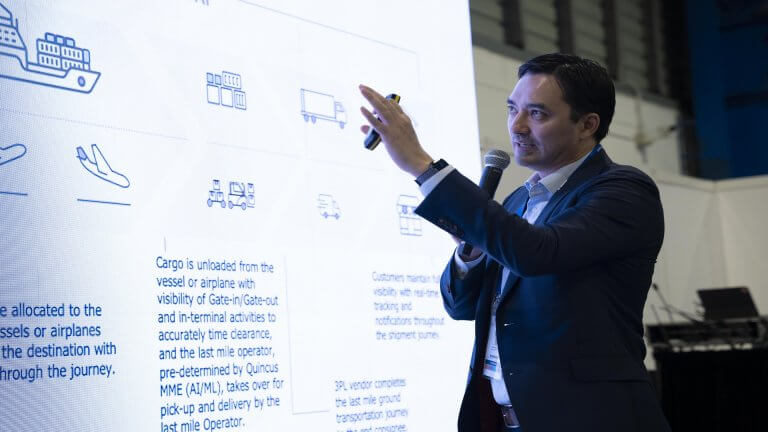
AI may put your firm in danger
“It is surely better to be wronged than to do wrong.”
― Isaac Asimov (In Memory Yet Green, 1979)
It’s not too early for “spooky season”. We come bearing horror stories—or, rather, a cautionary observation. No, we’re not talking about artificial intelligence taking over the world (although, keep your eyes peeled). We are talking about the wrong and right ways to invest in AI.
Most startups today base innovation claims on AI and machine learning, almost as sales pitches for other companies to implement it immediately. The truth is, AI requires vigorous investments in research and development to onboard specific skill sets, talent, processes, and routines. Unfortunately, there’s a wrong way to do so. It’s for this reason that AI may put your firm in danger.
Should your business adopt AI?
The Lean Startup framework suggests that when a new field like AI emerges, firms should choose between pivoting and persevering. However, consciously or not, everybody favors to pivot.
The risks of innovation
In a research paper, R&D Spending: Dynamic or Persistent?, Jürgen Mihm (INSEAD), Karan Girotra (Cornell), and I explore two avenues of funding R&D: persistence and dynamism. We show that persistent investing helps improve R&D performance. On the flip side, dynamic strategies negatively impact R&D efficiency. And, the more original the innovation portfolio, the more harmful dynamic (i.e., flexible) allocation becomes.
These results raise a couple of red flags. On the one hand, while persistence is the safer strategy, it doesn’t exactly stand out—at least, not until results start showing. That’s why we remind ourselves to “trust in the process.” Dynamism, by contrast, is associated with agility in fast-changing environments. Most companies enter the AI realm to expand their innovation portfolios and disrupt the market.
However, if you were entering a career in clowning, would you start by juggling knives—with no practice, prior knowledge, or first-aid?
While flexible and dynamic strategies are impressive, they suffer in R&D output. Of course, firms can have overarching goals beyond R&D—like boosting the firm’s financial performance or launching a new business model—but companies should anticipate and prepare for challenges when jumping on fresh opportunities. When your juggling falls out of rhythm, things tend to get cut off.
How to prepare your firm for AI risks
1. Determine your goals
First, set KPIs and objectives to determine any potential consequences of your strategy. Quincus AI bases KPIs on the desire to learn, create, and transmit knowledge. (Of course, your KPIs should be much more specific.)
2. Anticipate disruption, prepare for the AI revolution
In order to forecast the effectiveness of a strategy, we employ a Technical Product Manager and use the design fiction framework to predict:
- Who will the users be in 10 years?
- What pain points will they encounter?
- What journeys will they follow?
3. Simulate and test
Beta-test your innovation strategy and its consequences within your organization as you would for products. This way, you’ll prepare your organization for changes in routines, be able to implement best practices early in the process, and seamlessly onboard new talents into the ecosystem when the time is right—all of which work to minimize the gestation period.
Pros and cons of variability
Sometimes change is good, and sometimes risks are necessary. However, the numbers show that frequently changing R&D funding for dynamism is inefficient because it requires constantly bridging unproductive phases. The quality of R&D output is the biggest victim of erratic spending.
When you hire new engineers, they need time to learn routines, adapt to new mindsets, and become fully productive. Similarly, when you purchase new equipment, you get the same lag. Knowledge creation takes time. By contrast, when you fire a researcher, the flow of new knowledge immediately decreases. Selling or repurposing machines slows the innovation process.
Persistent R&D spending could improve the quantity of R&D output by 5–10% and the quality of such output by up to 30%, compared to dynamic R&D spending.
Will AI help or harm your organization?
We don’t discourage implementing AI into your business model to disrupt a market. Quincus AI is based on the same values. AI isn’t a danger for your firm if you take the time to introduce it the right way. However, founders must consider the vision and strategy of their firm’s entire ecosystem. Ideally, if upper management can provide guidance regarding budget fluctuations, R&D managers can strategically manage their resources (personnel and otherwise) and avoid knee-jerk shifts.
Quincus AI aspires to design the algorithms, models, and products that users of tomorrow will need. Our approach is user-centric and AI-driven. While one of our playgrounds is logistics, we strive to disrupt various fields.
Following technology giants like Google and Meta, we designed our research environment, Quincus AI, to stimulate new opportunities. We built it in Toronto to attract young and creative talents. We guaranteed time independence and resource stability to build innovation on perseverance.
Written by Christophe Pennetier
Learn about Quincus’ work in logistics.
Generate your solution
Subscribe to keep up with our latest news









